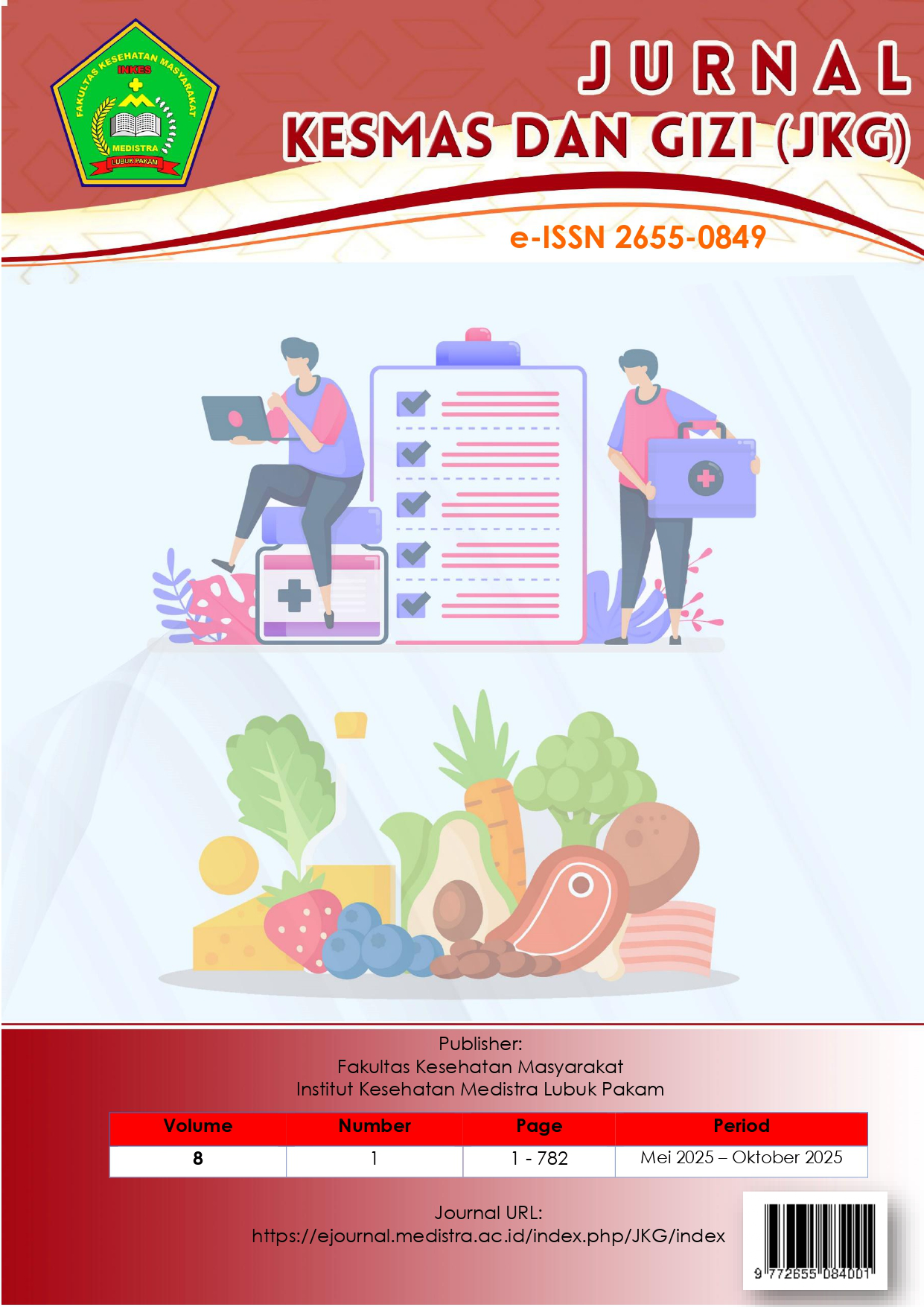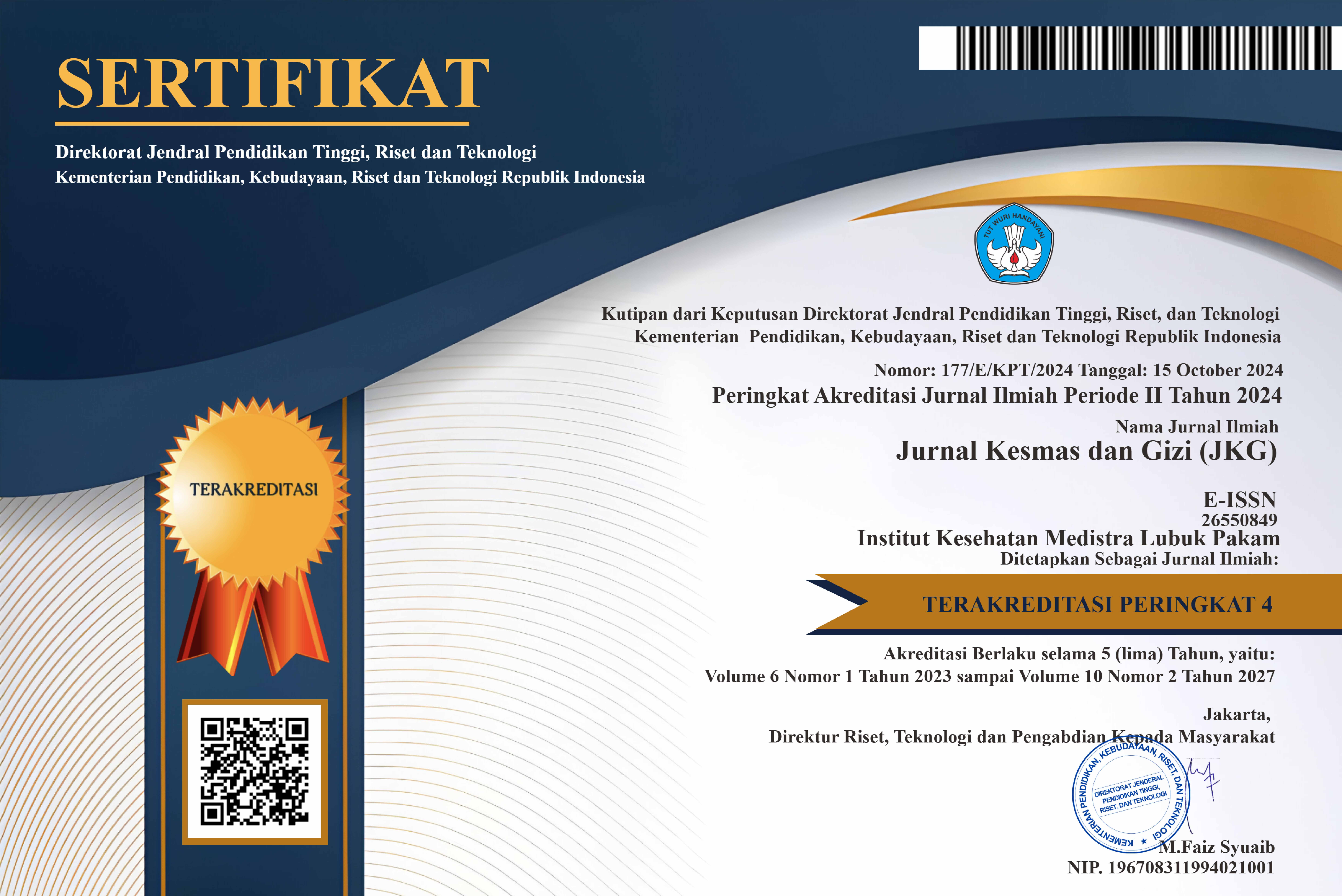The Optimization of Budget Absorption in the Use of General Allocation Funds (DAU) for the Health Sector in Bengkalis Regency
DOI:
https://doi.org/10.35451/57ctme05Keywords:
General Allocation Fund, Health Department, Budget Optimization, AbsorptionAbstract
This study aims to identify and analyze the factors influencing the low absorption rate of the General Allocation Fund (DAU) for the health sector by the Bengkalis Regency Health Office in 2024. The research employed a qualitative approach using data collection methods such as direct observation, interviews, and document analysis. Data were analyzed using a Fishbone diagram to identify root causes, the USG (Urgency, Seriousness, Growth) method to determine problem priorities, and the Delphi method to formulate solutions. The findings revealed that by the third quarter of 2024, DAU absorption was only 58%, far below the target. The main issues included poor inter-sectoral coordination, administrative delays, and limited human resource capacity. Proposed strategies include developing SOPs, establishing cross-sectoral teams, and implementing technology-based monitoring systems to enhance efficiency, transparency, and accountability. This study provides practical recommendations for optimizing DAU absorption to support better public health services.
Downloads
References
[1] M. Ulfa, Haryadi, and M. Gowon, “The Effect Of Regional Original Income, and General Allocation Funds On Fiscal Stress In Jambi Province,” J. Akutansi dan Keuang. Univ. Jambi, vol. 6, no. 3, pp. 119–123, 2021.
[2] A. Musfirati and H. Sugiyanto, “Pengaruh Dana Alokasi Umum, Dana Alokasi Khusus, Dana Bagi Hasil, Dan Dana Keistimewaan Terhadap Tingkat Kemandirian Keuangan Daerah,” Substansi Sumber Artik. Akunt. Audit. dan Keuang. Vokasi, vol. 5, no. 1, pp. 20–36, 2021.
[3] T. Wahyuni, “Pengaruh Dana Alokasi Umum (DAU) dan Pendapatan Asli Daerah (PAD) terhadap Belanja Daerah di Kabupaten Aceh Tenggara Provinsi Aceh,” Inst. Pemerintah. Dalam Negeri, pp. 1–23, 2019.
[4] S. T. Olfah, A. Zunaidi, and R. Ardhyaningtyas, “Informasi Kinerja Kementrian Kesehatan Berdasarkan Redesain Perencanaan dan Penganggaran,” J. Anggar. dan Keuang. Negara Indones., vol. 5, no. 1, pp. 41–56, 2023.
[5] A. R. Ghonniyu, “Evaluasi Penggunaan Dana Alokasi Umum ada Anggaran Pendapatan dan Belanja Daerah Tahun Anggaran 2022 di Kabupaten Pemalang, Provinsi Jawa Tengah,” Inst. Pemerintah. Dalam Negeri, vol. 9, no. 2003, pp. 356–363, 2022.
[6] R. D. Adiwardhana, “Optimalisasi Penyerapan Anggaran Pendapatan Dan Belanja Daerah Selama Pandemicovid-19 Di Kabupaten Bulungan Provinsi Kalimantan Utara,” Institur Pemerintah. Dalam Negeri, 2022.
[7] S. K. Arif, Rencana Strategis Bisnis 2020 - 2024 RSUP Dr. Wahidin Sudirohusodo. Makassar: RSUD Dr. Wahidin Sudirohusodo, 2022.
[8] N. Sukmawati and E. Naryono, “Pengaruh Dana Alokasi Umum dan Dana Alokasi Khusus Terhadap Anggaran Belanja Modal Pemerintah Kota Sukabumi,” J. Mhs. Akunt., vol. 2, no. 1, pp. 23–43, 2021.
[9] I. G. Siregar, “Pengaruh Dau, Dak, Pad Dan Pertumbuhan Ekonomi Terhadap Belanja Modal,” Dyn. Manag. J., vol. 6, no. 2, p. 175, 2022.
[10] T. M. Patadang, T. O. Rotinsulu, and I. P. Rorong, “Pengaruh Pendapatan Asli Daerah (Pad), Dana Bagi Hasil (Dbh), Dana Alokasi Umum (Dau), Dan Dana Alokasi Khusus (Dak) Terhadap Indeks Pembangunan Manusia (Ipm) Minahasa Tenggara Dengan Pengeluaran Di Bidang Kesehatan Sebagai Variabel Intervening,” Pembang. Ekon. dan Keuang. Drh., vol. 22, no. 1, pp. 132–149, 2021.
[11] A. S. Sulaeman and N. Andriyanto, “Optimalisasi Pengelolaan Dana Alokasi Khusus (Dak) Untuk Mendorong Pertumbuhan Pembangunan Daerah Di Indonesia,” J. Apl. Akunt., vol. 5, no. 2, pp. 175–200, 2021.
Downloads
Published
Issue
Section
License
Copyright (c) 2025 Hafizhah Maulia, Ermanto, Jasrida Yunita

This work is licensed under a Creative Commons Attribution 4.0 International License.
Copyright in each article is the property of the Author.


























